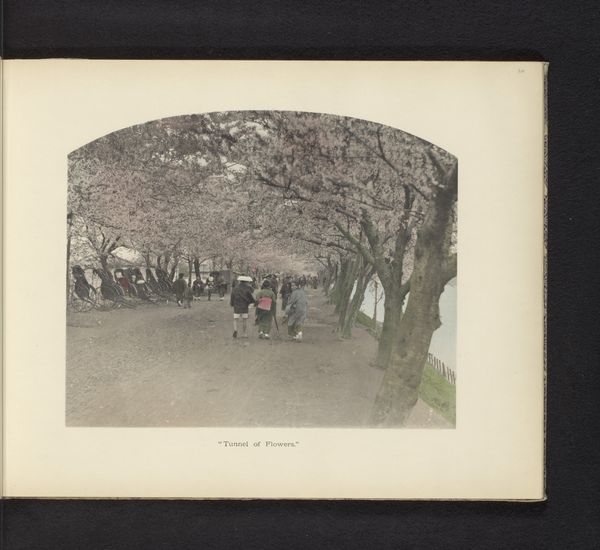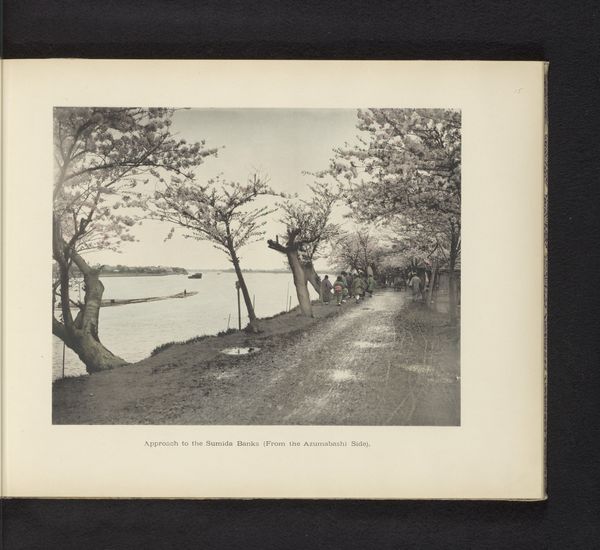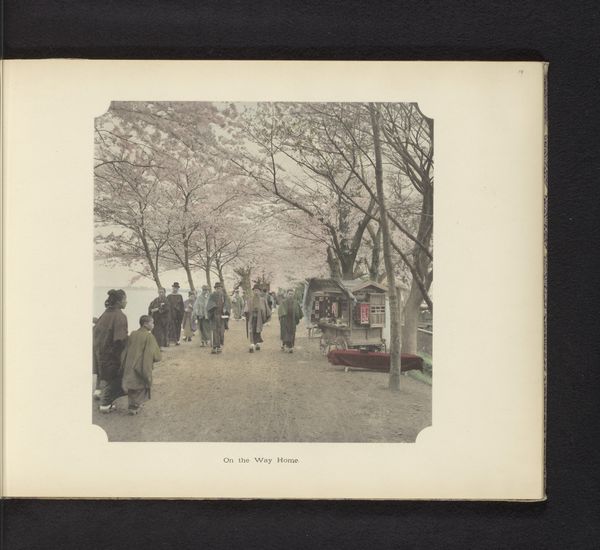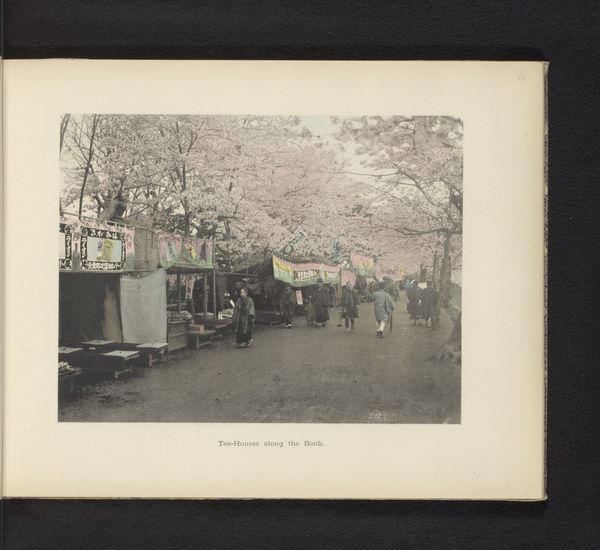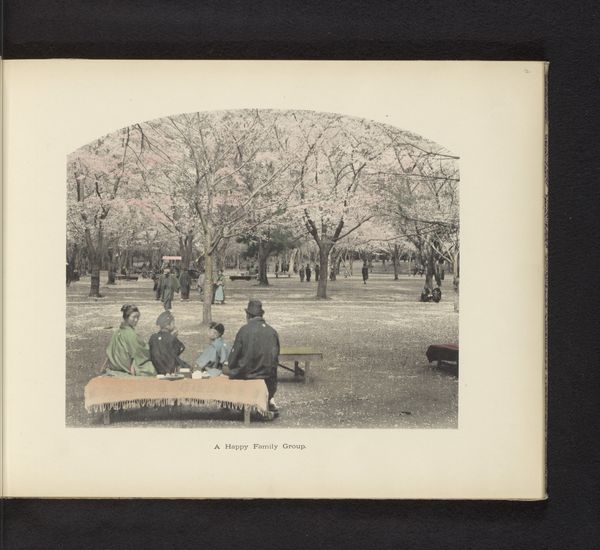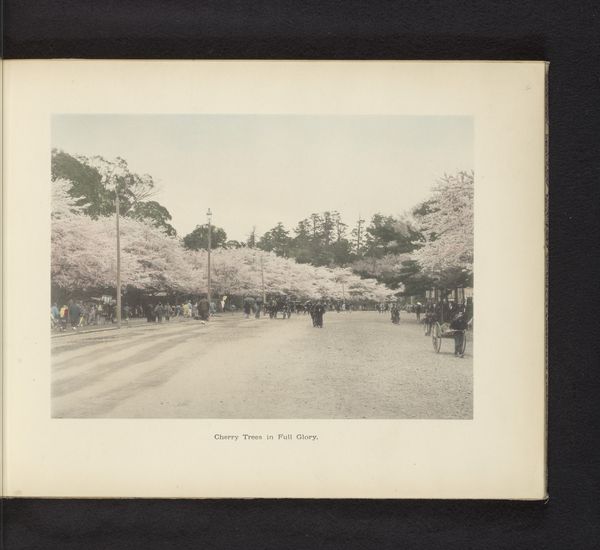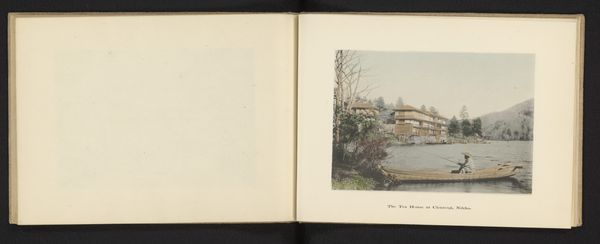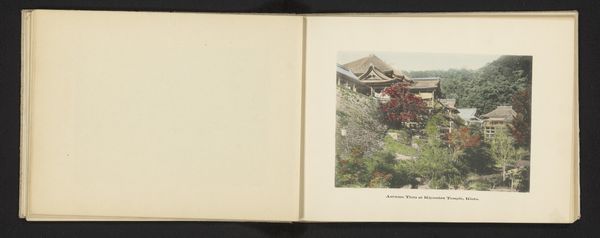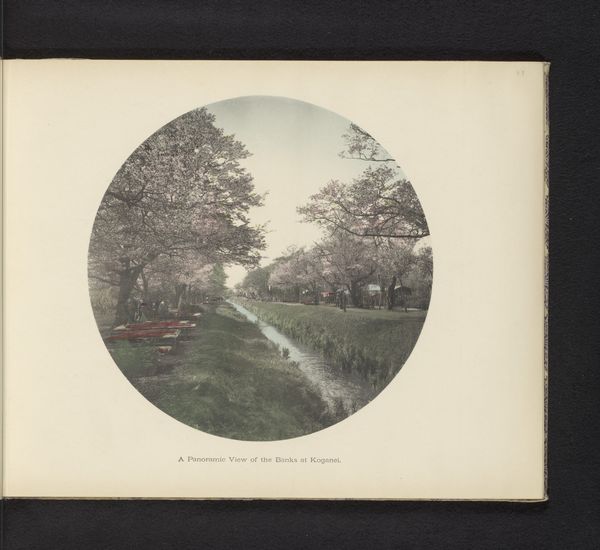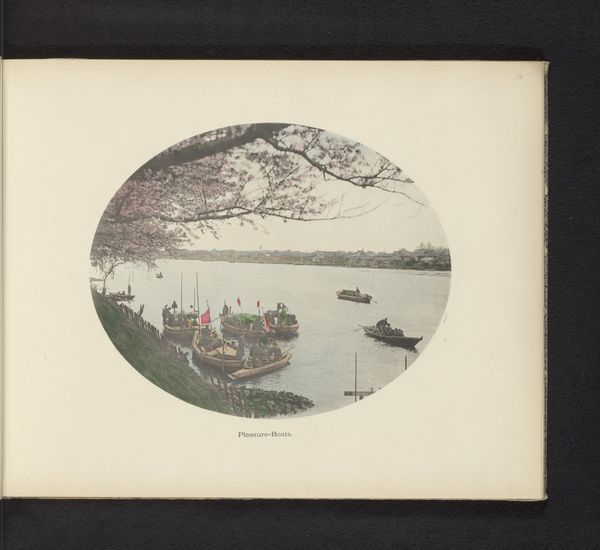
Gezicht op de oever van de Sumida rivier in Uenopark in Tokyo, Japan before 1897
0:00
0:00
#
photo of handprinted image
#
aged paper
#
homemade paper
#
pale palette
#
light coloured
#
white palette
#
personal journal design
#
personal sketchbook
#
unrealistic statue
#
coloured pencil
#
park
Dimensions: height 227 mm, width 225 mm
Copyright: Rijks Museum: Open Domain
Editor: So, this photograph, titled *Gezicht op de oever van de Sumida rivier in Uenopark in Tokyo, Japan* was taken by Kazumasa Ogawa sometime before 1897. It’s a gorgeous scene. What first strikes me is the dreamy, almost ethereal quality, likely enhanced by the photographic techniques of the time. What catches your eye? Curator: The cherry blossoms dominate, of course. Think about the symbolism: transience, beauty, a poignant reminder of life's fleeting nature. The Japanese call it "mono no aware," the pathos of things. But look closer—how does Ogawa position figures walking along the Sumida River underneath this canopy? What statement does that pose? Editor: They are diminutive in comparison to the scale of the tree. Is this symbolic of man's role in relation to nature? Curator: Precisely. It's a deliberate contrast. This isn’t just a pretty picture. It’s a commentary on the delicate balance between humanity and the natural world, rendered with such a sensitive light, the image carries this poignant feeling which also tells you a story about history: As Japan opened to the West, how does Ogawa position traditional imagery against the backdrop of modernisation? What endures? What changes? The enduring allure of cherry blossoms against the modernising landscape suggests a fascinating dialogue. What do you feel looking at the characters? Editor: The figures seem almost lost in the grandeur of the scene. Maybe it hints at anxieties around societal change, a kind of cultural placelessness. Curator: Anxieties, hopes… yes, all intertwined. It invites us to reflect on our own place within larger forces, personal versus cultural identity. And isn’t that, after all, the power of enduring symbols? Editor: Definitely. I didn’t see so many layers on first look! Curator: Every symbol holds a mirror, inviting us to consider its reflections on our past, present, and future.
Comments
No comments
Be the first to comment and join the conversation on the ultimate creative platform.
